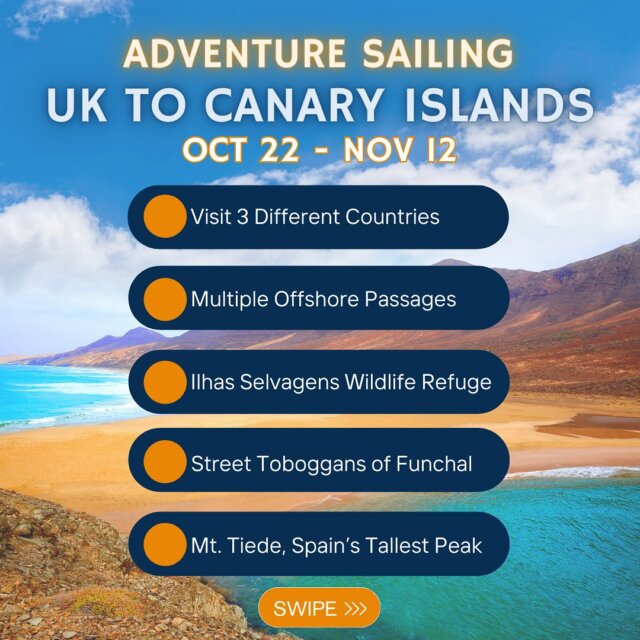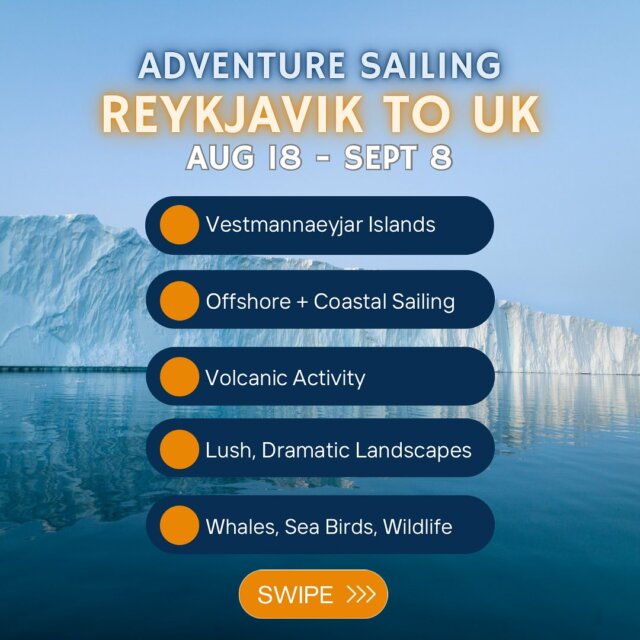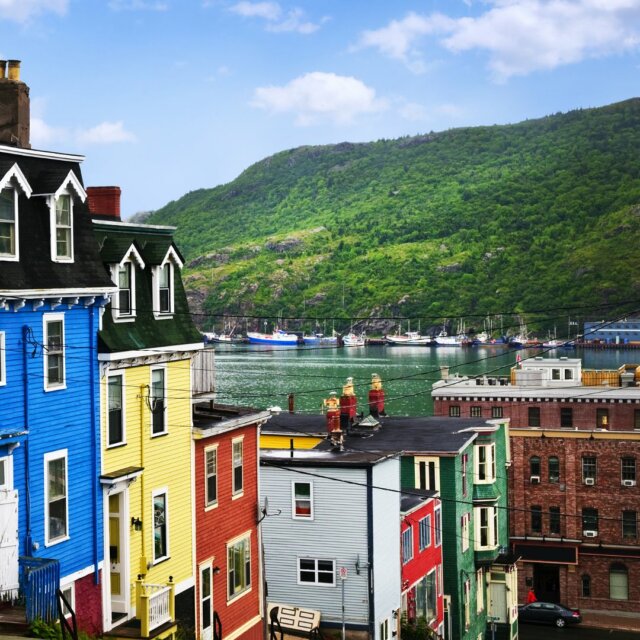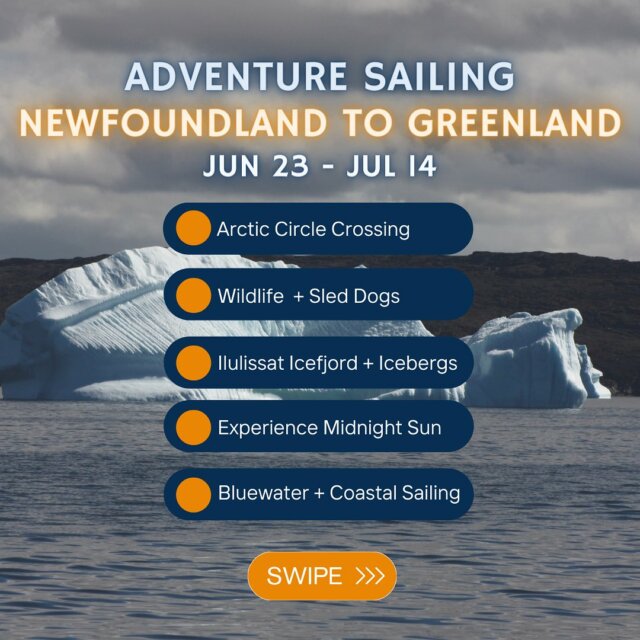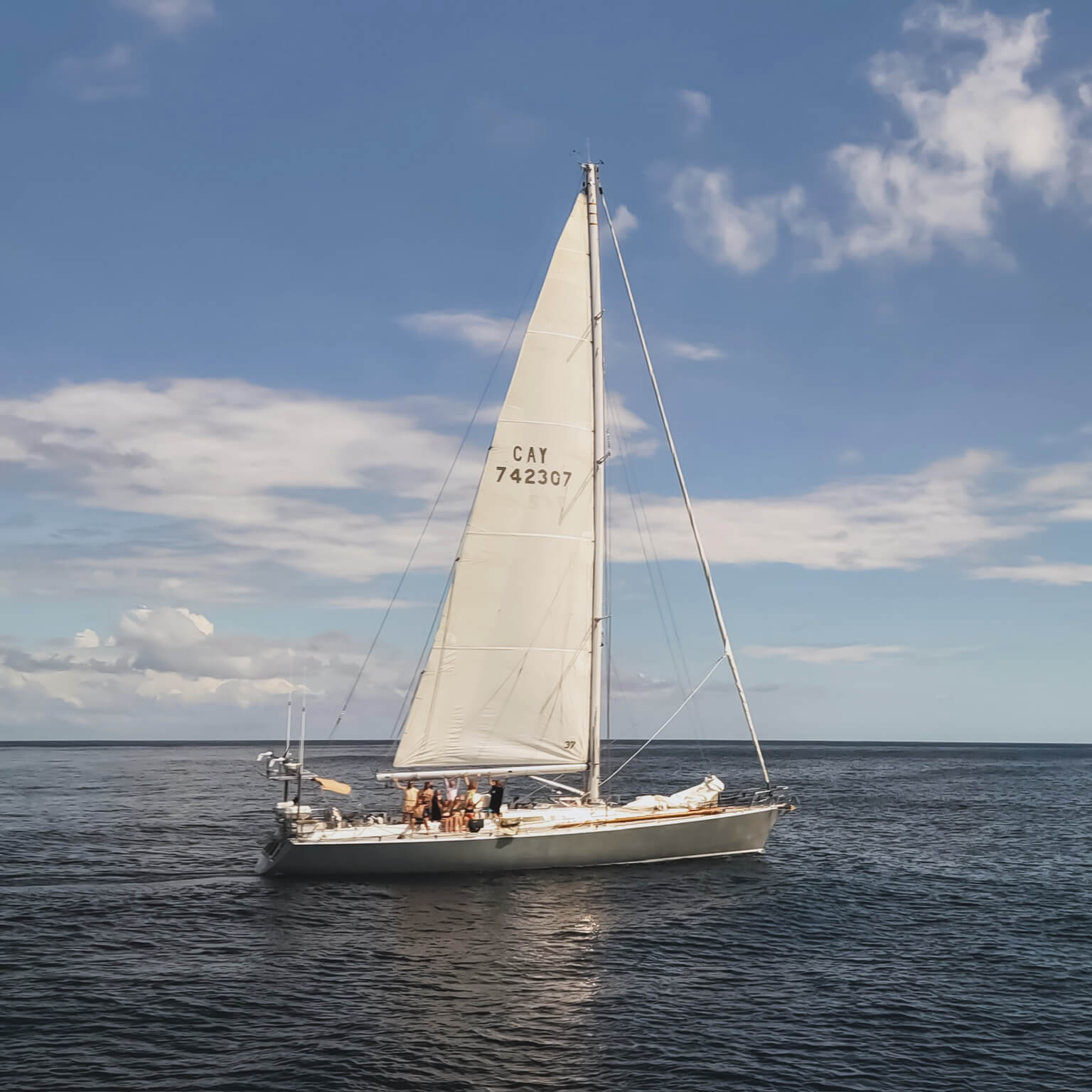Today’s blog comes from Pangaea’s Educational Coordinator, Andrew Murgatroyd. Andrew is busy sailing towards Halifax, Nova Scotia with a crew of 10, and will be staying on board as a deckhand for October’s Extreme Sail Training program, sailing to Bermuda. He is very much enjoying life on board, and creating opportunities for collaboration with other sail training vessels. Today he recounts his experience collaborating with the Class Afloat program on board the Tall Ship Sorlandet.
The strangest life I’ve ever lived
by Andrew Murgatroyd

Sept 20th, 2013
41 groggy students from around the world stare sleepily at me from the banjer of Sorlandet, the oldest fully rigged working tallship in the world. The ship, built in Norway in 1927, is home to the Canadian high school “Class Afloat“. They are en route from the Great Lakes to the Azores and onward to Lisbon, Morocco, down the coast of Africa, back across the Atlantic to the Caribbean and finally, across the pond to the UK. I have met them here in Quebec City to teach them about Sea Dragon and ocean plastics.

http://www.fullriggeren-sorlandet.no/en
I clear my throat and jump in the deep end.
As the educational coordinator aboard Sea Dragon it has been my job to design the curriculum for high school teachers (Educators on Board) and students (Young Adventurers). I am a science and math teacher from Victoria, BC. After becoming a little fed up with classroom teaching I have searched for ways to teach experientially (outside of the classroom walls) and incorporate sailing, ocean literacy, conservation and Great Lakes ecology into the high school curriculum.
Today’s lesson is about Sea Dragon and our mission to research plastics in the oceans and Great Lakes. I begin with a slideshow that shows off our incredible ship and explains how the long range and comparatively low operating costs of an offshore racing vessel made it an ideal candidate to be refitted for scientific research.
I continue by highlighting the research that we have done sampling for marine plastics in the 5 major ocean gyres, and the causes and effects of the problem. Although it can be difficult to get teenagers fired up about anything at 9am, the students offer perceptive insight into the matter, and we have some great discussions as we break into smaller groups.

Now for the real challenge!
We break into groups of 8 to begin our chemistry lab. This lab was originally designed by Dr. Lorena Rios Mendoza, a professor from the University of Michigan Superior, who came aboard Sea Dragon earlier this summer. I begin by showing the students a handful of plastic “sand” collected by Sea Dragon crew members on Camilo beach in Hawaii, then I pass around vials of “nurdles”. Nurdles are pre-production thermoplastic resin pellets about 4mm in diameter. They are raw plastic, shipped from overseas and sold cheaply to North American factories where they are melted down into plastic products. A single pound of raw plastic contains around 25,000 nurdles. If they ever escape into the marine environment (as we discovered this summer in Lake Erie) they become a persistent and dangerous pollutant. Marine organisms can easily mistake nurdles for food, and nurdles are not only indigestible intestinal clogging death nuggets, they have a nasty habit of absorbing dangerous chemicals such as DDT or PCB’s.
In our lab we take nurdles of unknown plastics and observe whether they sink or float in different liquids. We then use the relative density of the nurdles to determine what type of plastic they are.
This hands-on exercise is an elegant way to learn about plastics we retrieve from our Manta trawl and it also adheres to the learning outcomes prescribed by the Canadian Government. It’s an approach to teaching that I believe creates meaning and reaches the greatest diversity of learners.
As soon as we finished class, there were some keen students ready to sign up with Pangea Explorations and join the crew as we continue our mission of exploration, education and conservation.

P.S
After a day of exploring old Quebec, I returned to Toronto to meet a class from “City School“, an Ontario Eco-School, to make another presentation and spark discussions about single use disposable plastics and how even in a seemingly land-locked city like Toronto, we have a far reaching impact on the world’s oceans.
